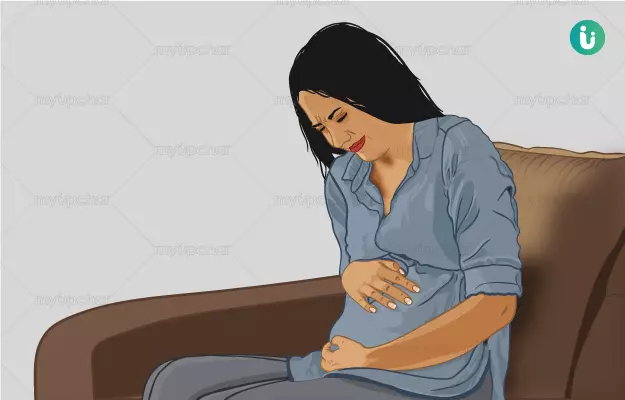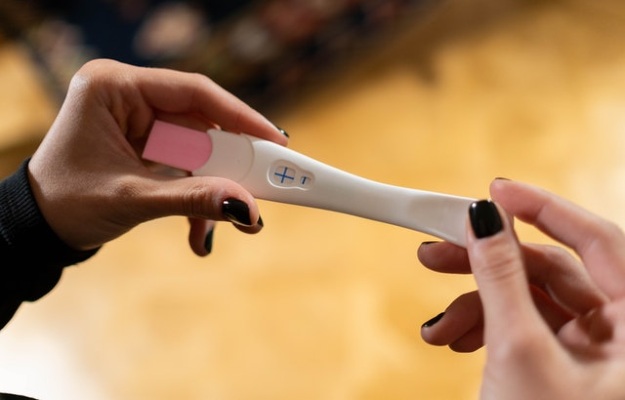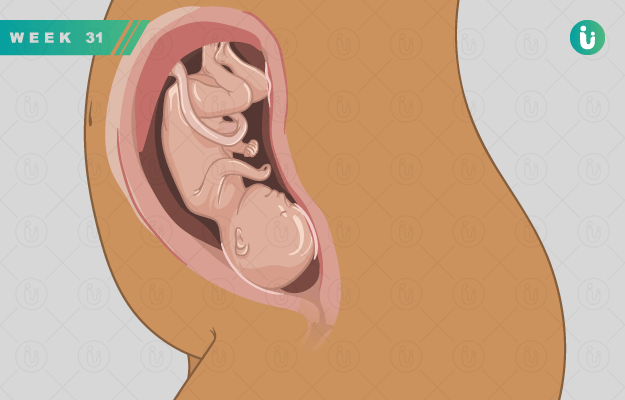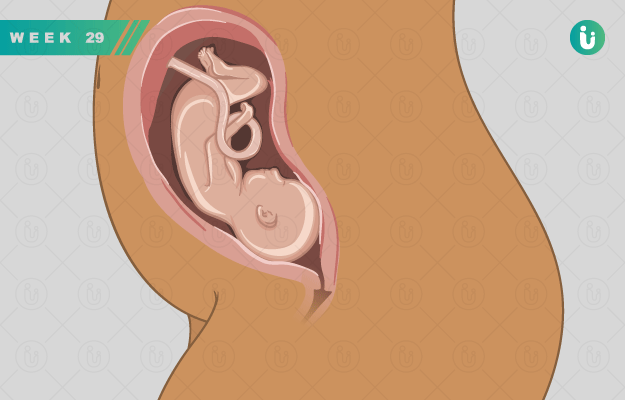These contractions are an important indicator of how far along you might be in your labour: in the earliest stage of labour, the contractions tend to be irregular and mild (they may feel like menstrual cramps or stomach gas). As labour progresses, they tend to become very regular and very strong. The time gap between the contractions also reduces.
Some key features to recognise labour contractions by are:
- The contractions are rhythmic; meaning you can time them and see patterns in the intervals between contractions and the length of contractions.
- The intensity and duration of contractions increase with time.
- The pain usually starts in the back and radiates towards the front of the body.
Here’s a look at the three stages of labour, and how contractions feature in each one:
Stage 1
Oxytocin hormone and prostaglandins (made up of lipids) are the two main chemicals responsible for producing labour contractions. While they are produced naturally in the body, doctors may also use these chemicals to induce labour where necessary.
Here's how the chemicals are produced in the body naturally: When the baby comes lower down the mom-to-be’s pelvis, it causes the cervix to open up and become thinner. This, in turn, sends signals to the brain to release oxytocin, to trigger contractions.
At this time, the placenta releases prostaglandins which also help to produce contractions and thin out the cervix further.
The longest of the three stages, stage 1 can last from 12-20 hours. By the time stage 1 ends, the cervix dilates to about 10 centimetres (or about four times its normal size).
Some important signs of this stage include lower back pain and cramping. Just before this stage begins, the fetal membranes (a sort of sac that protects the baby during pregnancy) break and amniotic fluid comes out - this is colloquially known as water breaking. Whenever this happens, you may notice a brownish discharge before the amniotic fluid starts to flow. Rest assured, this is absolutely normal.
Intensity and frequency of contractions
- In the latent phase of stage 1 of labour, the frequency of contractions can be anywhere between one in every 20 minutes to one every five minutes. Each contraction can be 30-90 seconds long.
- The contractions come in faster and last longer as the labour progresses to the active phase of stage one. At this time, the contractions tend to be 45-60 seconds long, and they recur every three to five minutes.
- In the final phase of stage 1, called the transition phase, the contractions are much closer together: they can be 60-90 seconds long and 30-120 seconds apart.
Stage 2
In this stage, the baby slides further down. Once the baby’s head pushes out into the birth canal, the mom-to-be can start pushing the baby out in time with the contractions (sometimes this is instinctive, at other times, a doctor or midwife needs to encourage expecting mothers to push and relax at the proper intervals). The duration of this stage can vary between a few minutes and three hours.
Intensity and frequency of contractions
- The contractions tend to be regular, longer and stronger now, to ease the baby’s passage through the birth canal.
- In this stage, while a portion of the uterus actively helps to push the baby out, the lower half of the uterus remains relaxed and stretches to let the baby come out through the birth canal.
Stage 3
Over the next few minutes to a half-hour, mild contractions push the placenta out of the new mom's body after delivery.
As the contractions become stronger, the important thing to remember is to breathe through them, call your doctor and make arrangements to get to a hospital where you can deliver your baby safely. Remember also that you’ve prepared for this is over several months






































